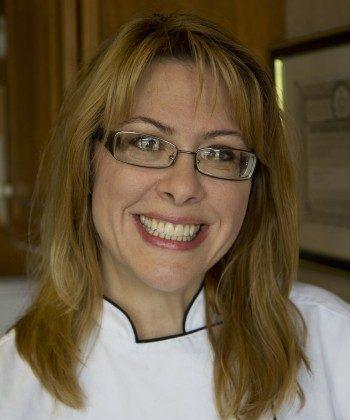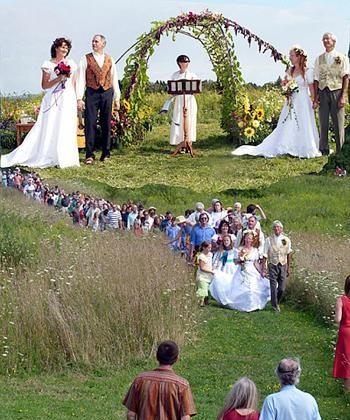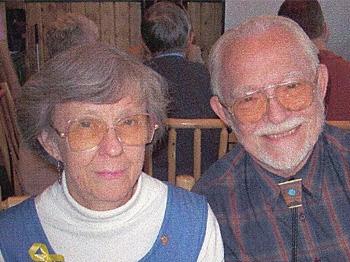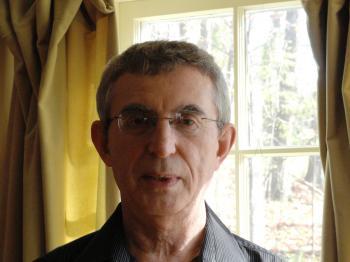Vince Tolve roars with laughter whenever he watches slapstick vaudeville shows with The Three Stooges, Larry, Moe, and Curly.
“The child is the father of the man,” wrote Wordsworth. The “child” in Vincent Tolve keeps him amused, even though he is the executive vice-president as well as the general counsel of an Illinois bank with six branches.
The bank’s staff collect his memos, and he keeps a straight face while they chortle. Here are excerpts from a recent conversation I had with Vincent Tolve.
MDR (Daniels-Ramanujan): Since you have taken 16 trips on steam-and-coal-powered trains, explain your fascination with trains.
VT (Tolve): A steam-and-coal train uses fire and water. That is what we call “bliss.” The most hated thing is pain. Both pain and bliss are necessary to move us on our journey in life.
MDR: For the “day of reckoning,” name seven persons whom you would choose to save.
VT: I would choose the man who ran naked from the garden of Gethsemani when Jesus was seized by the mob; Shakespeare’s wife, Anne Hathaway, to whom he left “his second-best bed”; Elisabetta Giocondo, Da Vinci’s model for Mona Lisa; Lycurgus, the Spartan lawgiver who decreed that all of the wealthy should have exactly the same amount of property and that the rich and poor must eat the same food at the same communal table; the well-dressed man at the corner of State and Randolph Streets in Chicago who stopped me, poking a finger into my chest, saying, “I know you—you are a preacher”; my father and my mother, who could sit on his lap and so spare a seat; and a woman I met recently on a train station platform wearing a provocatively fragmented orange dress who told me she could tell by looking into my eyes that I was a kind man.
MDR: If you were to order a meal for your mother in your ancestral Italian Village, what would it be?
VT: The village is called Agnone. (My mother translates it as “agony.”) I would start with miniature meatballs with bits of pizza dough in chicken soup; then follow with an antipasto of assorted salami, prosciutto, sausages, and cheeses; then to the spinach-and cheese-filled ravioli; then the main course of roast leg of lamb; and end with piate forte, a liquor-laced custard concoction, lubricated by blood-thick wine.
MDR: What is so great about Italy?
VT: The countryside around Agnone is dairy country, with rolling hills. I like Roman history, the big churches, Renaissance art, and most of all how Italians do not work as hard as Americans.
My grandfather came to America and labored laying railroad tracks; my father worked in a steel mill; my uncle was a railroad engineer. Because of how hard they worked, I felt duty-bound, so instead of playing outdoors with friends, I worked hard at my books.
MDR: What were the earliest and most memorable stories you heard as a child?
VT: At school, the nuns told us stories from “The Lives of Saints.” I literally believed those stories. One saint plucked her eyes out, so she would not be tempted by the world. Another found out that biting a host (holy Communion wafer) would drown us in rivers of blood. Another mortified her flesh by eating moths and spiders, and she whipped herself with the branches of a birch.
I think these things are the fire and steam of my crucible, the salt and pepper at my table.
“The child is the father of the man,” wrote Wordsworth. The “child” in Vincent Tolve keeps him amused, even though he is the executive vice-president as well as the general counsel of an Illinois bank with six branches.
The bank’s staff collect his memos, and he keeps a straight face while they chortle. Here are excerpts from a recent conversation I had with Vincent Tolve.
MDR (Daniels-Ramanujan): Since you have taken 16 trips on steam-and-coal-powered trains, explain your fascination with trains.
VT (Tolve): A steam-and-coal train uses fire and water. That is what we call “bliss.” The most hated thing is pain. Both pain and bliss are necessary to move us on our journey in life.
MDR: For the “day of reckoning,” name seven persons whom you would choose to save.
VT: I would choose the man who ran naked from the garden of Gethsemani when Jesus was seized by the mob; Shakespeare’s wife, Anne Hathaway, to whom he left “his second-best bed”; Elisabetta Giocondo, Da Vinci’s model for Mona Lisa; Lycurgus, the Spartan lawgiver who decreed that all of the wealthy should have exactly the same amount of property and that the rich and poor must eat the same food at the same communal table; the well-dressed man at the corner of State and Randolph Streets in Chicago who stopped me, poking a finger into my chest, saying, “I know you—you are a preacher”; my father and my mother, who could sit on his lap and so spare a seat; and a woman I met recently on a train station platform wearing a provocatively fragmented orange dress who told me she could tell by looking into my eyes that I was a kind man.
MDR: If you were to order a meal for your mother in your ancestral Italian Village, what would it be?
VT: The village is called Agnone. (My mother translates it as “agony.”) I would start with miniature meatballs with bits of pizza dough in chicken soup; then follow with an antipasto of assorted salami, prosciutto, sausages, and cheeses; then to the spinach-and cheese-filled ravioli; then the main course of roast leg of lamb; and end with piate forte, a liquor-laced custard concoction, lubricated by blood-thick wine.
MDR: What is so great about Italy?
VT: The countryside around Agnone is dairy country, with rolling hills. I like Roman history, the big churches, Renaissance art, and most of all how Italians do not work as hard as Americans.
My grandfather came to America and labored laying railroad tracks; my father worked in a steel mill; my uncle was a railroad engineer. Because of how hard they worked, I felt duty-bound, so instead of playing outdoors with friends, I worked hard at my books.
MDR: What were the earliest and most memorable stories you heard as a child?
VT: At school, the nuns told us stories from “The Lives of Saints.” I literally believed those stories. One saint plucked her eyes out, so she would not be tempted by the world. Another found out that biting a host (holy Communion wafer) would drown us in rivers of blood. Another mortified her flesh by eating moths and spiders, and she whipped herself with the branches of a birch.
I think these things are the fire and steam of my crucible, the salt and pepper at my table.





Friends Read Free